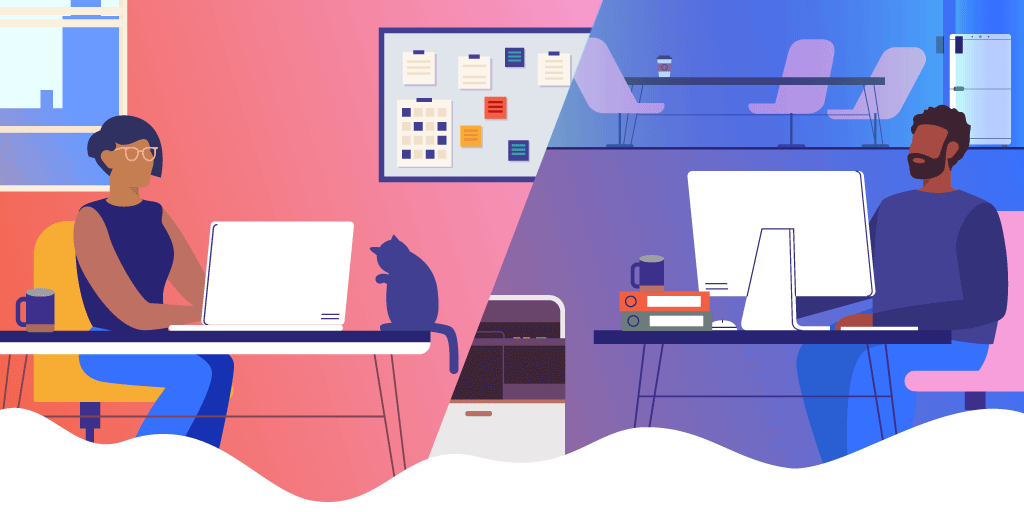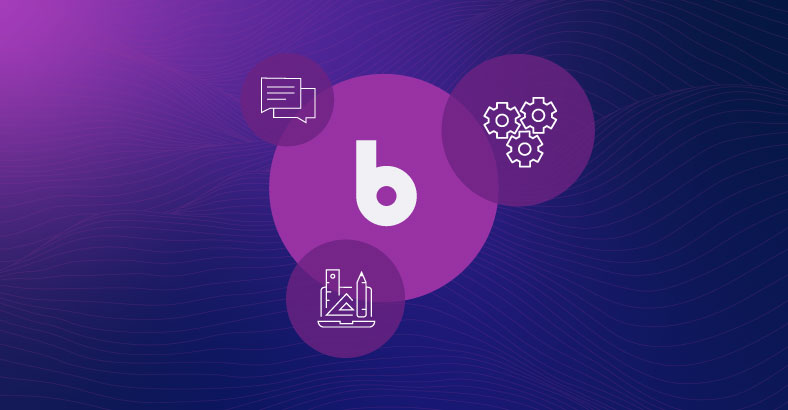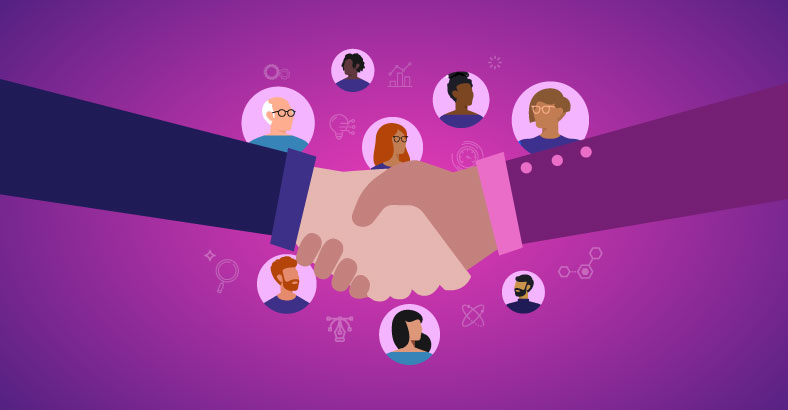Why Diversity Is An Important Factor When Choosing A Consultancy
When companies partner with consultancies that value diversity, they open themselves up to new opportunities for business growth and innovation. Working with diverse organizations provides many benefits and ultimately, diversity on your projects and initiatives helps contribute to greater business potential. This can be realized through expanded diversity of thought, increased innovation opportunities, the potential to reach untapped audiences, and a happier employee base.
According to some recent research, there's a direct impact on business to companies that promote diversity within the workplace. Companies with diverse personnel experience report 53 percent greater performance versus companies without women board directors, and companies that promote racial/ethnic diversity also see 35 percent greater financial returns.
Contrast that with a $64B annual cost for companies as a result of replacing employees who departed because of discrimination, often stemming from lack of representation.
Research like this helps, as it's not always easy for an organization to measure how diversity, equity, and inclusion can relate to an organization's bottom line and innovation capabilities. Beyond the workplace and a company's hiring decisions, diversity and representation can play a role in the potential solutions and ideas generated.
Working with outside help, like with consultancies, agencies, or vendors, extends an organization's capabilities—often companies use these external partners to supplement missing technical skills or capabilities, or provide expert guidance and strategy. Extending an organization's goals for diversity and inclusion to include their external partners can provide additional benefits—but it can require a purposeful effort and changes to existing processes.
Consider the following benefits of working with diverse individuals, teams, and partners.
Increased Diversity of Thought
When everyone is of the same sex, race, sexual orientation, and ability level, they are subject to groupthink and conformity bias. By definition, groupthink is the practice of thinking or making decisions as a group in a way that discourages creativity or individual responsibility. Conformity bias is based on a famous study that's been around for decades, and it relates to bias caused by group peer pressure. If an individual feels the majority of the group is leaning towards/away from a certain choice, they will tend to go along with the group, rather than voice their own opinions.
As it relates to business growth and innovation opportunities, groupthink and conformity bias are big problems.
To illustrate a real-life example, a major hotel chain installed new automatic water faucets in their restrooms. This company has locations across the globe and serves a diverse variety of customers. After these new faucets were introduced, hotel guests discovered they did not work for people with dark skin. Customers would wave their hands under the faucet sensor, only to be ignored. As it turns out, dark skin does not reflect light as well as light skin, and this faucet only worked for light-skinned individuals while alienating dark-skinned hotel guests.
In retrospect, if Black/African American engineers had been in the room during the development of this new faucet, it's likely the issue would have been resolved well before the product went to market. In testing, engineers with dark skin would have quickly discovered the usability issue, and this costly faux-pas may not have occurred.
When I think about innovation as it relates to diversity, I always reflect on this cautionary tale and ask myself, "Does the 'water faucet' work for everyone?" Meaning, is the innovation of a new product or technology relevant to each and every person it should serve, or is it excluding a subset of the market or target audience?
If your organization is not working with a consultancy that promotes a diverse workforce, they may not see innovation limitations, pain points, or issues with new products.
More Innovation Opportunities
Early on in my career, it was not uncommon to walk into a room and be the only Person of Color, woman, or both at once.
There is something empowering about seeing another woman in the room, or POC, or someone who is differently abled. It gives me courage to use my voice and share out-of-the-box ideas.
That's because as humans, we feel comfort and camaraderie when we see ourselves reflected in others in a professional setting. It also allows individuals to see greater possibilities, what is achievable, and how we are paving the way for others. There's a rumor about Beyonce choosing a retail partner that, whether true or not, helps illustrate the importance of representation.
In turn, diversity and representation lead to more innovation opportunities by empowering individuals to draw upon their unique backgrounds and stories.
- Take Farida Bedwei, who was diagnosed with cerebral palsy at an early age. Against all odds, she became a software engineer, co-founder, and CTO of Logiciel, a Ghanaian financial software company used by 130 microfinance organizations across Ghana.
- Or the Dyslexie font, which was invented by Christian Boer, a graphic designer with dyslexia. This unique typeface is designed specifically for people with dyslexia to make reading, learning, and working easier.
- And Whitney Wolf Herd, Founder and CEO of Bumble, who saw a gap in the online dating app space and gave women the power to make the first move. Her company recently went public, making Wolfe Herd the youngest self-made woman billionaire, and Bumble also has a board that is over 70 percent female.
Those who see things differently have the ability to create technology and inventions the world hasn't even begun to imagine. Innovations born out of adversity have the capability to create a significant impact on the happiness and livelihood of their intended audience.
Potential to Reach Untapped Audiences
A consultancy that promotes diversity brings a range of approaches to ideation for clients. In turn, this gives clients permission to push their own limits and think outside the box. That said, companies who resist innovation that stems from diverse insights do have the ability to expand their "box," or worldview, into a slightly bigger forum.
But there's a big difference between tolerating and embracing.
Organizations that seek diversity in their own workforce or with their partners have a higher likelihood of blowing the top off the box, so to speak. When you work with a broad range of talent, the assumptions that stagnate innovation are taken off. This gives your company the ability to be fully in tune with fresh insights, cultures, and audiences you may not have otherwise considered.
According to this 2018 study by Nielsen, Black/African American consumers account for a disproportionate amount of product sales in a number of fast-moving consumer goods categories. With $1.2 trillion in spending power, Black/African American consumers are an important population for brands that want to grow market share and brand preference.
But to authentically engage with untapped audiences, a brand cannot appear to be disingenuous. Take Netflix for example, who in 2020, lured star producer and show writer Shonda Rhimes away from cable television and on to their streaming platform. Netflix committed more than $100 million for Rhimes to create her first show with them, and the result was Bridgerton, a period drama that spotlights a diverse team of creators and on-screen talent. The costly initial investment has paid dividends, garnering Netflix its fifth most-viewed show ever, and Bridgerton helped catapult the number of new Netflix subscribers in 2020 to 203 million.
With a Netflix basic subscription costing around $9…well, that's not exactly chump change.
Companies Who Embrace Diversity Have Happier Employees
The Co-Innovation Manifesto, written by our CEO Keith Schwartz, states that organizations should insist on having the best talent. And that doesn't mean talent that's limited to a particular sex, race, sexual orientation, or ability level.
It refers to talent that understands the importance of continual learning and growth. Top talent wants to work with diverse teams that will challenge them and bring fresh perspectives that provide the spark for innovation.
According to Gartner, research found that in a diverse workforce, performance improves by 12 percent, and intent to stay by 20 percent.
These days, talent doesn't just want to collect a paycheck and leave. They want reassurance their organization carries the same beliefs and values as they do, and who respect their voice and contributions.
Take the company I work for, Bounteous, as an example. We've taken great measures to promote a culture devoted to promoting inclusivity, such as through introducing a Transgender and Gender Nonconforming Equality Policy and Guidelines to our team.
The objective of this document was not only to support our transgender and gender non-conforming team members, but also to inform and educate those who do not identify as such. Through taking steps like this, we often hear from team members who feel "seen" and understood, sometimes for the first time ever in their workplace.
Representation matters.
If Your Company Isn't Asking Your Consultancy About Diversity, Here's Where to Start
It can be hard to quantify how different organizations value or seek out diversity, both in their recruiting or procurement processes. Many companies have posted statements and commitments to diversity on their own sites, and it's natural to assume companies have varying levels of diversity.
But how are companies addressing diversity when seeking out partners? For some measure, we took an informal look at a sample of Request For Proposals (RFPs) that Bounteous has received and/or responded to over the past year. Out of the 15 RFPs selected, we found that no RFPs explicitly asked about diversity or culture in their stated decision-making process, and only one asked for leadership bios.
That said, some major organizations, like General Mills, are considering diversity when choosing a consultancy or agency. In 2016, part of their selection criteria was that potential partners must be 50 percent women and 20 percent People of Color within their creative departments.
In addition, one of our clients at Bounteous, Coca-Cola, has committed to promoting diversity within its legal agencies. Within the U.S, 51 percent of Coca-Cola's lawyers are ethnically diverse and 23 percent of that group is Black, 18 percent Asian, and 10 percent Hispanic. Additionally, 53 percent of Coca-Cola's U.S.-based lawyers are women.
As the research above states, diversity is crucial when looking to grow and innovate. If your organization would like to incorporate questions about diversity in your RFP's but aren't sure where to start, here are a few ideas:
| What steps is your company taking to retain diverse talent? |
| What resources and benefits do you offer to support team members with families or disabilities? |
| How does your company support employees who are LGBTQIA+, Transgender, and Gender Nonconforming? |
| What programs are in place to promote inclusion and accessibility? |
| Do your employees participate in diversity training, such as unconscious bias or cultural competency training? |
| Please share any available data on your current employee makeup. How many women and POC sit within your leadership team? What is your company's overall percentage of women? POC? |
Doing Better Things and Doing Things Better–Together
At the end of the day, when it comes to starting conversations about diversity and inclusion, no one is perfect. Having a conversation with your current or potential consultancy could be awkward. But these discussions are so important and opening the lines of communication is crucial to your organization's integrity and bottom line.
One of our favorite phrases at Bounteous is; we're "doing better things and doing things better." We, too, are constantly looking for ways to improve—internally focusing on recruiting, hiring, and processes that continue to promote diversity, equity, and inclusion. We're also seeking out ways to further the dialogue of diversity and inclusion—such as looking for ways to incorporate DEI language in our briefs and SOWs.
Doing better things and doing things better can only start if we take a brave first step. We're in it together.


